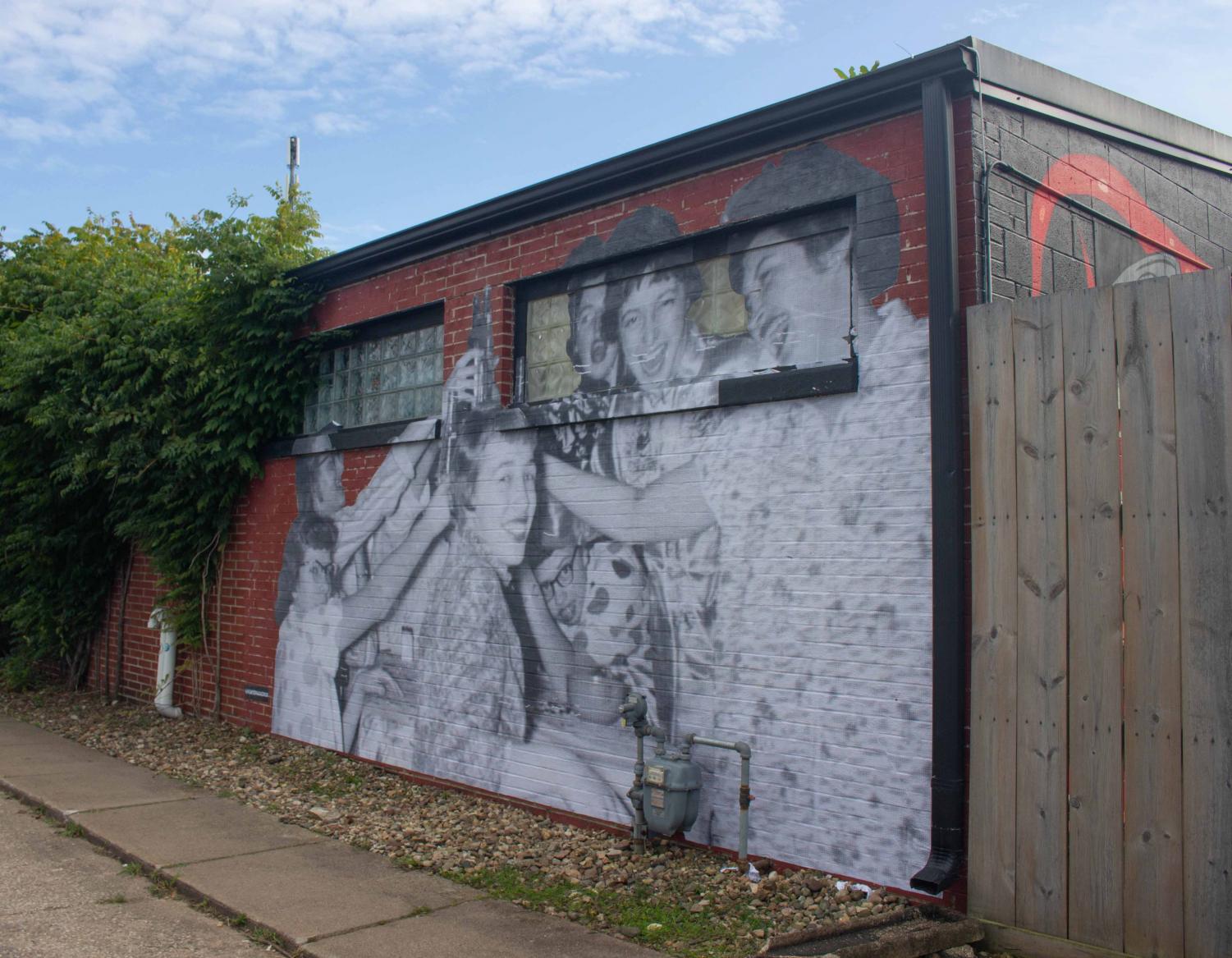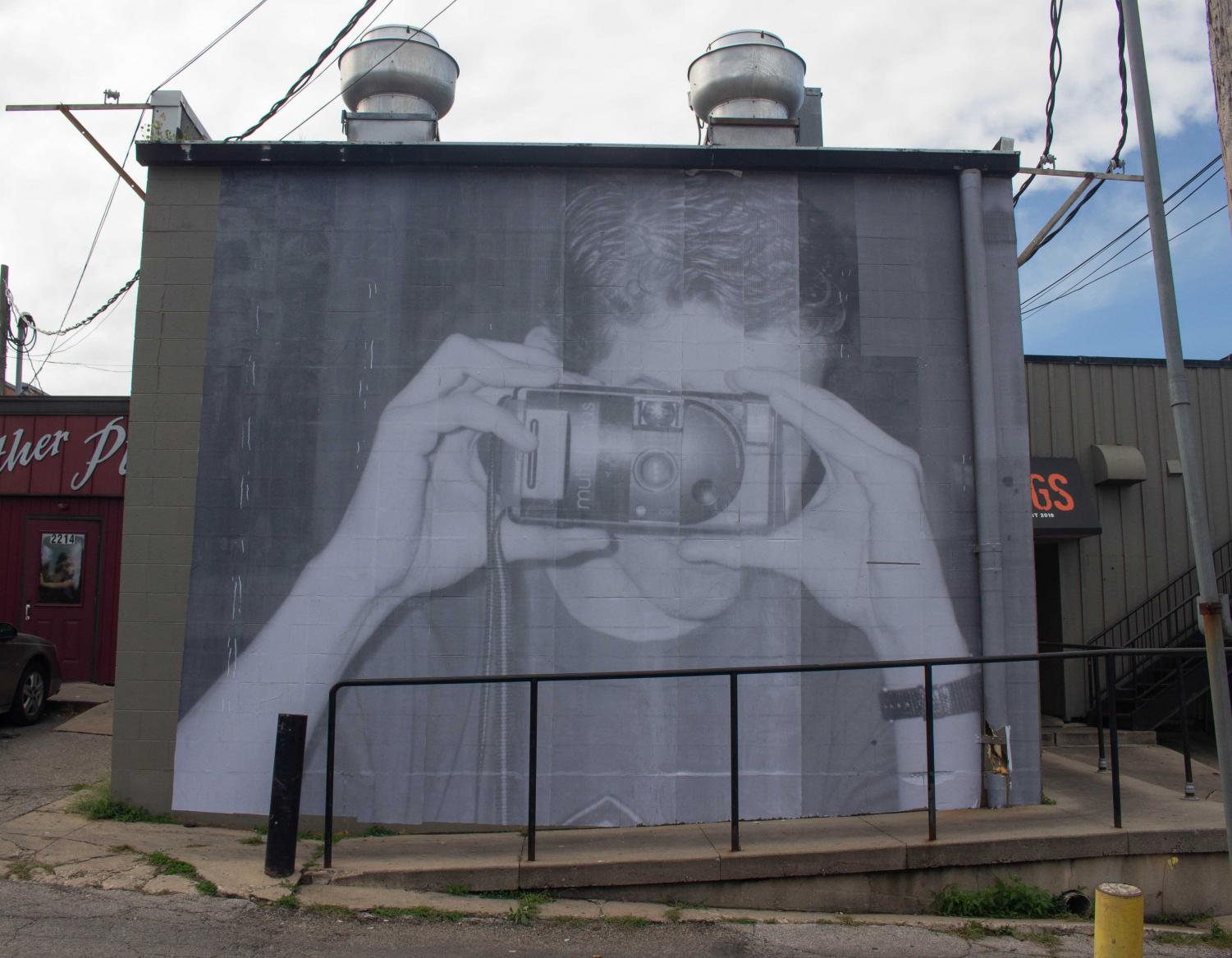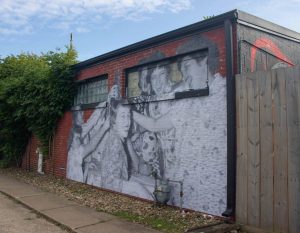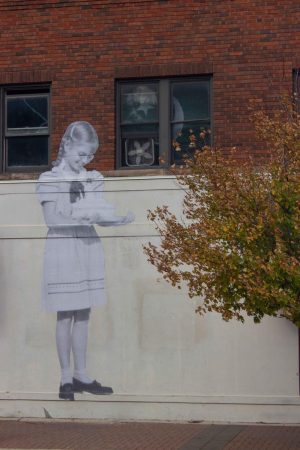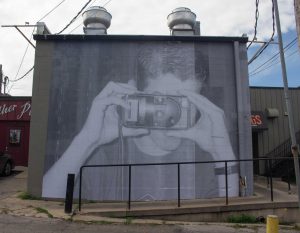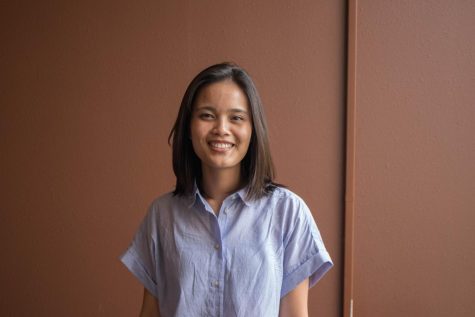Fortepan Iowa wheat-pastes past
Oct 7, 2019
Three buildings on College Hill are sporting a new look after a wheat-pasting project was completed last week.
Crews of volunteers adhered five massive images onto exterior walls in the district on Thursday, Oct. 3 and Friday, Oct. 4.
The wheat-pasted images were pulled from Fortepan Iowa, an online archive of digitized photos based in Rod Library that launched in 2015 as the first sister site to the original Fortepan archive in Hungary. Photos in the Iowa archive, all of which are donated, are carefully curated to represent everyday life in Iowa in the 19th and 20th centuries.
Fortepan Iowa and the College Hill wheat-pasting project was directed by Bettina Fabos, a UNI professor of Interactive Digital Studies (IDS).
“[We] decided to celebrate the archives through this public art project just to get people to know about the archives,” Fabos said. “We didn’t know how popular and incredible wheat-pasting would be until we started doing it.”
Wheat-pasting is a centuries-old adhesive technique that uses a mixture of flour and water to form a paste. The paste helps the printed images bond to the building walls and creates a protective layer over the images. The process causes no harm to the wall, and images can survive up to several months, weather permitting.
Planning for the College Hill wheat-pasting project has been underway for about six months. Fortepan Iowa received a grant from the Iowa Arts Council as well as additional funds from the Alumni Association and the College Hill Partnership. Other project contributors included local business owners and the city planning and zoning commission.
The Iowa Arts Council commissioned Fortepan Iowa to install wheat-pastings and photo exhibitions in five Iowa towns — Anamosa, Cedar Falls, Ottumwa, Sumner, and Webster City — over the next year. According to Fabos, the original plan was to put up the images in May 2020, however, excitement grew from the Alumni Association, and the College Hill project was bumped up to coincide with UNI’s 100th Homecoming anniversary.
Fabos’ team for the project included students in the IDS program, professor and interim communication studies department head, Chris Martin, and lead wheat-pasting artist Isaac Campbell.
An IDS program alumni and a current graduate student at UNI, Campbell spent a year in Hungary as a Fulbright Scholar with the original Fortepan archive, where he learned the wheat-pasting process.
“[This project is] such an exciting way to showcase the complexity of Iowa,” Campbell said, “and really highlight what makes our communities different and special.”
The College Hill installations are wheatpasted onto the south side of Copyworks, the north side of Octopus and the east side of Little Bigs.
One image in particular holds a special place in Fabos’ heart. A one-and-a-half story tall cutout on the wall of Copyworks depicts a 12-year-old girl named Shirley Dean holding a birthday cake. Now 81 years old, the subject of the image captured in 1937 still lives in Cedar Falls as a resident of the Western Home.
“I hope that people end up taking pictures next to Shirley Dean when it’s their birthday,” Fabos said.
Dean and other Western Home residents visited the project site last Friday as her photo was being installed. Fabos presented Dean with a birthday cake.
Although the first phase of the project is nearing completion, Fabos said her team plans to add onto the five existing College Hill images at some point in the future.
“We want images that are a little bit more representative of the student body […] We have only white representation right now and that’s not what I wanted,” she said. “We are looking for images that have strong appeal, that mean something and that excite people, ones that have a whimsical sort of flair.”
Overall, its creators agree that the goal of the College Hill wheat-pasting project is to bring joy its viewers and embody the celebration spirit of homecoming.
“We just think these images are really magical and just [serve as a tool] to humanize the buildings with people,” Fabos said.


